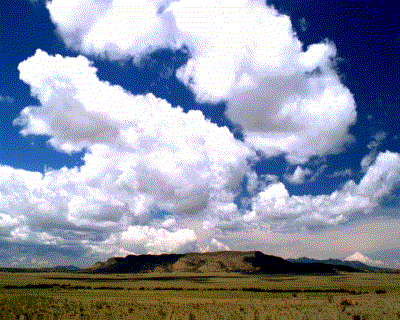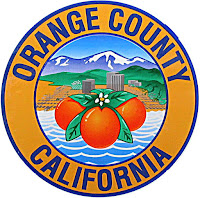Learning a language, piece by piece
Every young child, as he grows up, learns to pronounce words and he learns what they mean. Sometime later, he learns that some words are the opposite of other words. For example, "male" and "female" are opposites for each other. Each of these words are called an "antonym" for each other, as opposed to a synonym, which is one word that has the same meaning as another word.Here are some other antonyms.
| tall | short | in | out | happy | sad | ||||||||
| fat | thin | light | dark | open | closed | ||||||||
| fast | slow | wet | dry | hot | cold |
More pieces of the language
Later, the child learns that the world isn't all black and white. A building that he thought was tall, just because it had 10 stories, is now not as tall when he finds out that another building has 30 stories.Some children will continue to describe a 10-story building as tall and then use another word, such as "super-tall" or "gigantic" to describe a 30-story building. Other children will say that both buildings are tall, without judging one building against the other one. Still later, the child will learn various ways of measuring the height of a building, either by counting the number of stories or by using words like "feet", "yards", or "kilometers".
More pieces
Still later, the child will learn that some words, used by a person who describes himself as a member of a group, describe people who aren't in that group. Some of the following words are meant to express negative emotions, ranging from mild distaste to outright hatred, while other words in the following list simply help to define one's own group by naming the people who aren't in it.| sailor | land-lover (sometimes pronounced "landlubber") |
| person in military service | civilian |
| Muslim | infidel (a synonym of the Christian word "heretic") |
| Jew | Gentile |
| heterosexual | homosexual (see Note 1 below) |
| law-abiding citizen | felon (if the person is in prison) |
| law-abiding citizen | ex-con (if the person is out of prison) |
| farmer | cowboy (see Note 2 below) |
| rancher | sod-buster (Note 2 applies here also) |
| U.S. Citizen | foreigner (if they're not in the country) |
| U.S. Citizen | alien (used to describe a foreigner who is in the country) |
 Note 1. The word "homosexual" is an accurate description of someone who has a sexual attraction exclusively for someone of the same sex. The word "gay", which is often used to describe someone who is not heterosexual, is often inaccurate.
Note 1. The word "homosexual" is an accurate description of someone who has a sexual attraction exclusively for someone of the same sex. The word "gay", which is often used to describe someone who is not heterosexual, is often inaccurate.In the photo on the right, Anderson Cooper is sad, but he is still a homosexual.
| Note 2. The 1955 movie Oklahoma had a scene that included a description of the rivalry between "the farmer and the cowman". This 6-minute video shows that scene. The description is in the form of a song that is sung during a community dance. The rivalry was more-or-less settled when barbed wire was invented in the second half of the 19th century. |
This is the third paragraph of the page on the History Channel website that shows its' invention in 1873
The effect of this simple invention on the life in the Great Plains was huge. Since the plains were largely treeless, a farmer who wanted to construct a fence had little choice but to buy expensive and bulky wooden rails shipped by train and wagon from distant forests. Without the alternative offered by cheap and portable barbed wire, few farmers would have attempted to homestead on the Great Plains, since they could not have afforded to protect their farms from grazing herds of cattle and sheep. Barbed wire also brought a speedy end to the era of the open-range cattle industry. Within the course of just a few years, many ranchers discovered that thousands of small homesteaders were fencing over the open range where their cattle had once freely roamed, and that the old technique of driving cattle over miles of unfenced land to railheads in Dodge City or Abilene was no longer possible.
Another inaccurate antonym - "Never-Trumper"
The inspiration for this page were these words, which were spoken (I'm paraphrasing) by radio talk-show host Dennis Prager last night. "I don't know the Never-Trumpers very well. I want to know the Never-Trumpers."
"I don't know the Never-Trumpers very well. I want to know the Never-Trumpers."In contrast to the list of antonyms above, the hyphenated word "Never-Trumper" is sometimes used by people to describe themselves.
My own Twitter account (@BennyTheKite) has these words superimposed on them: "Never Trump", yet I do not consider myself part of either of these violent anti-Donald-Trump protest groups.
10-minute video
|
20-minute video
|
Attention, Dennis Prager
If Mr. Prager is reading this page, I would like to tell him more about my own personal form of the opposition.Link to the Google account for +The Dennis Prager Show
Unlike any of these people, my reasons for opposing Donald's candidacy were expressed on Twitter and on a couple of blog pages, not during any of his campaign events.
The term "Never-Trumper" is a bit misleading, and I apologize for it. A more accurate description of my political philosophy would include this statement.
"I am a supporter of U.S. Senator and presidential candidate Ted Cruz."
Link to the Google account for +Ted Cruz
The Senator has two Twitter accounts @tedcruz and @SenTedCruz. Both of them followed my Twitter account (@BennyTheKite) in early 2014, and they still follow my account today. Later, after he became a presidential candidate, my account was also followed by other accounts that were part of his campaign to become president. Link to a blog page, on this blog, that lists my VIP Twitter followers.
I have had multiple conversations on Twitter with other well-known people, including Montel Williams and Missouri State Senator Eric Schmitt, who is now the winner of a campaign to become the Missouri State Treasurer. Unfortunately, I have not had any conversations, on Twitter or anywhere else, with the Senator from Texas, so I cannot be certain why those two Twitter accounts followed my Twitter account. My best guess is that the reason why he did is because he read some of my early blog pages and some of my early Twitter remarks.
These are three tweets, part of a set of six, that Mr. Prager, who is Jewish, posted on his account. The person he references in the first tweet is Hillary Clinton. If you click on the link at the end of each of these tweets, you will be able to see them, as they appeared on his Twitter account.
(2/6)...defending her on the grounds that we shouldn’t judge people on the basis of private remarks… https://t.co/3qEYx5XFIF— Dennis Prager (@DennisPrager) October 9, 2016
(3/6) I also gave the example of Richard Nixon, who made anti-Jewish remarks in private – and then saved Israel’s life in the Yom Kippur War— Dennis Prager (@DennisPrager) October 9, 2016
(4/6)...Same criteria should be applied to Donald Trump and his gross sexual comments said in private 11 years ago. Note to conservatives:..— Dennis Prager (@DennisPrager) October 9, 2016
Note to Mr. Prager. I had two reasons to be opposed to the candidacy of Donald Trump. One is based on my reading of history. When political candidates have a large and dedicated group of followers and a lack of humility, then if they get elected, their arrogance often becomes a force that hurts their own city or country. Adolph Hitler's election as Germany's Chancellor, and later, its' President, was a complicated process, judging by this page that explains the process, but after he was elected, during a world-wide economic depression, he blamed Jews (and a few other groups of people) for Germany's poor economic health, and he then severely punished all of those groups by killing large numbers of them. In China during the 1950s, Mao Tse-Tung killed large numbers of his own country. In fact, Mao killed more than twice as many people as Hitler.
Donald Trump allowed and sometimes encouraged actual undemocratic behavior in his followers and supporters. They were often verbally abusive to other Republican presidential candidates and their supporters. I saw this abusive behavior first-hand in April 2016 when I tried to be elected as a delegate to the Republican National Convention. Whether you think that America is a democracy or a republic, one of the features of our system is a willingness to listen to other people's ideas. This concept was missing that day when I tried to participate in America's political process. The room was filled with many people who liked or even loved Donald. None of them were willing to listen to the ideas of anyone who wasn't a Trump supporter.
| Donald's reaction to the undemocratic behavior of his supporters is shown in this 48-second video. He knows that he can depend on them to hurt any opposition that he has. |
During the 2016 presidential campaign, Senator Cruz demonstrated a commitment to the principles that I believe a president should have. Those principles are in the Oath of Office that every president swears to obey.
B. Hussein Obama took that oath twice and broke both of those promises. Donald Trump is scheduled to take the same oath in a little over two months from now. I wanted Senator Cruz to be elected and to take the oath, for many reasons.
There's one more big difference between Donald Trump and Senator Cruz.
The Senator did say that Senate Majority Leader Mitch McConnell lied to Senator Cruz and a group of other Republican Senators. Link to a July 24, 2015 Politico story. However, telling one lie doesn't make a person a liar. Senator Cruz knew this important distinction and was very careful in his use of his words.
The Senator is a gentleman. This personal quality would have been one of the many reasons why he would have been a better president than Donald Trump, whose personal qualities are horribly abusive, judging by many of his very public statements during his own campaign.
I am an American citizen who loves his country.
I was a "Never-Trumper", but I cannot change the result of the election that took place last week, and I will not participate in any mass-protest against his election.
I still am a big fan of U.S. Senator Ted Cruz. If he does not become a justice on the U.S. Supreme Court or a high-ranking member of the new government, I will do what I can to help him be reelected as a U.S. Senator in 2018.
That's what I am, and that's what I am not.


























































